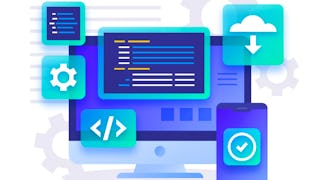Updated in May 2025.
This course now features Coursera Coach! A smarter way to learn with interactive, real-time conversations that help you test your knowledge, challenge assumptions, and deepen your understanding as you progress through the course. Unlock the full power of real-time web communication by building a standards-compliant WebSocket server from the ground up. This hands-on course offers an immersive deep dive into the WebSocket protocol using Node.js, helping you truly understand what happens behind the scenes during client-server messaging. By the end of the course, you'll be equipped to implement bidirectional data flow in your own apps with precision and confidence. You'll start by setting up a Node.js HTTP server and enhancing it with custom modules, error handling, and RFC 6455 compliance. Once the foundation is in place, you'll progress to implementing the WebSocket handshake process, parsing headers, and verifying client requests using cryptographic hashing techniques. Debugging and testing are integrated throughout the course to reinforce best practices. In the core modules, you'll master how to receive and decode binary WebSocket frames, handle small to large payloads, and use buffers, bitwise operators, and masking logic for reliable data processing. Then, you'll dive into server-to-client communication, frame construction, and echo responses. The final section focuses on gracefully handling connection closures and error frames, ensuring your implementation is robust and production-ready. This course is ideal for backend developers, full-stack engineers, or anyone looking to gain an authentic understanding of the WebSocket protocol beyond abstractions. A working knowledge of JavaScript and Node.js is required. This is an intermediate-level course designed for those ready to move past high-level libraries and explore the core mechanics of real-time networking.




 enthalten
enthalten











